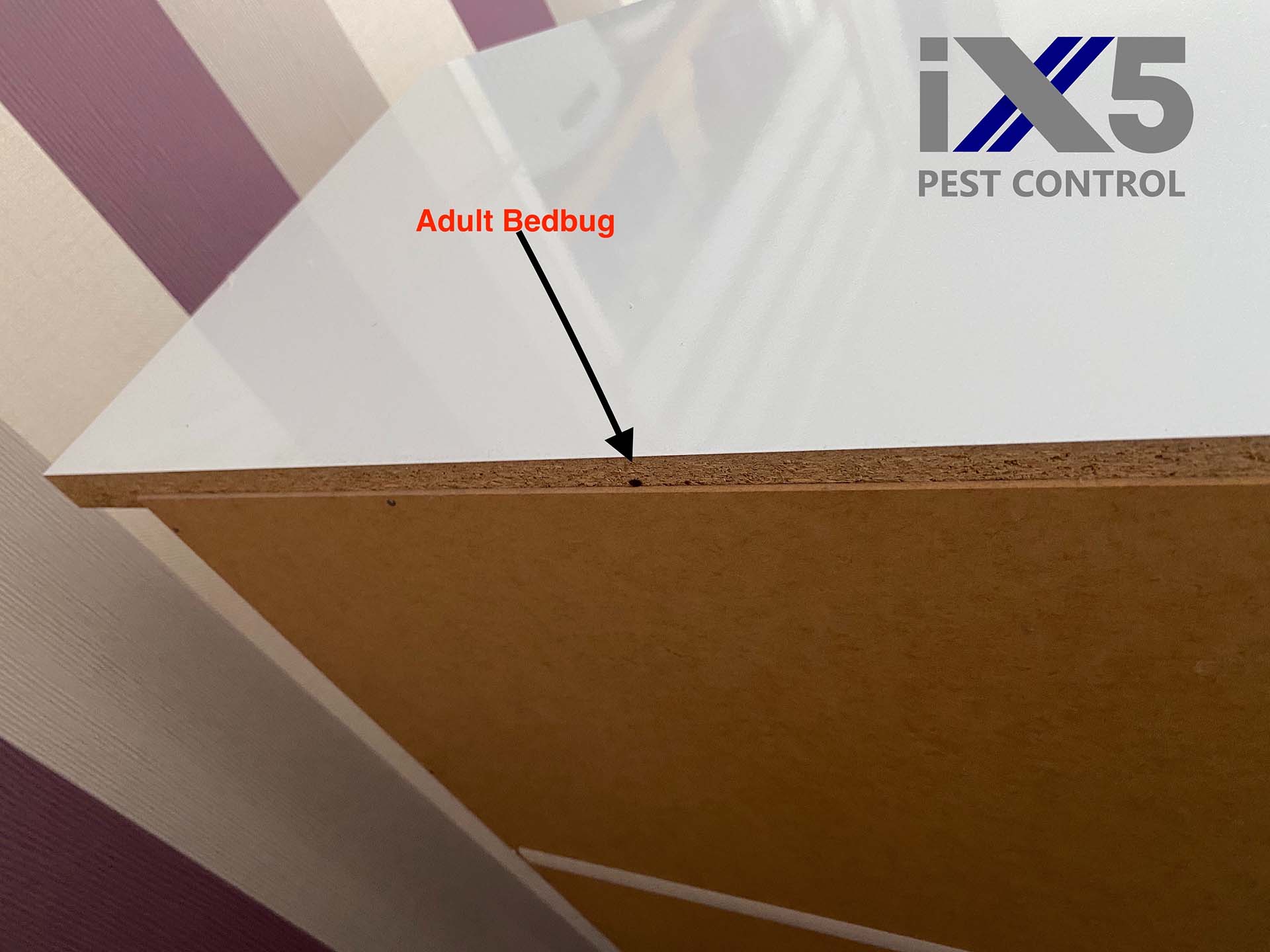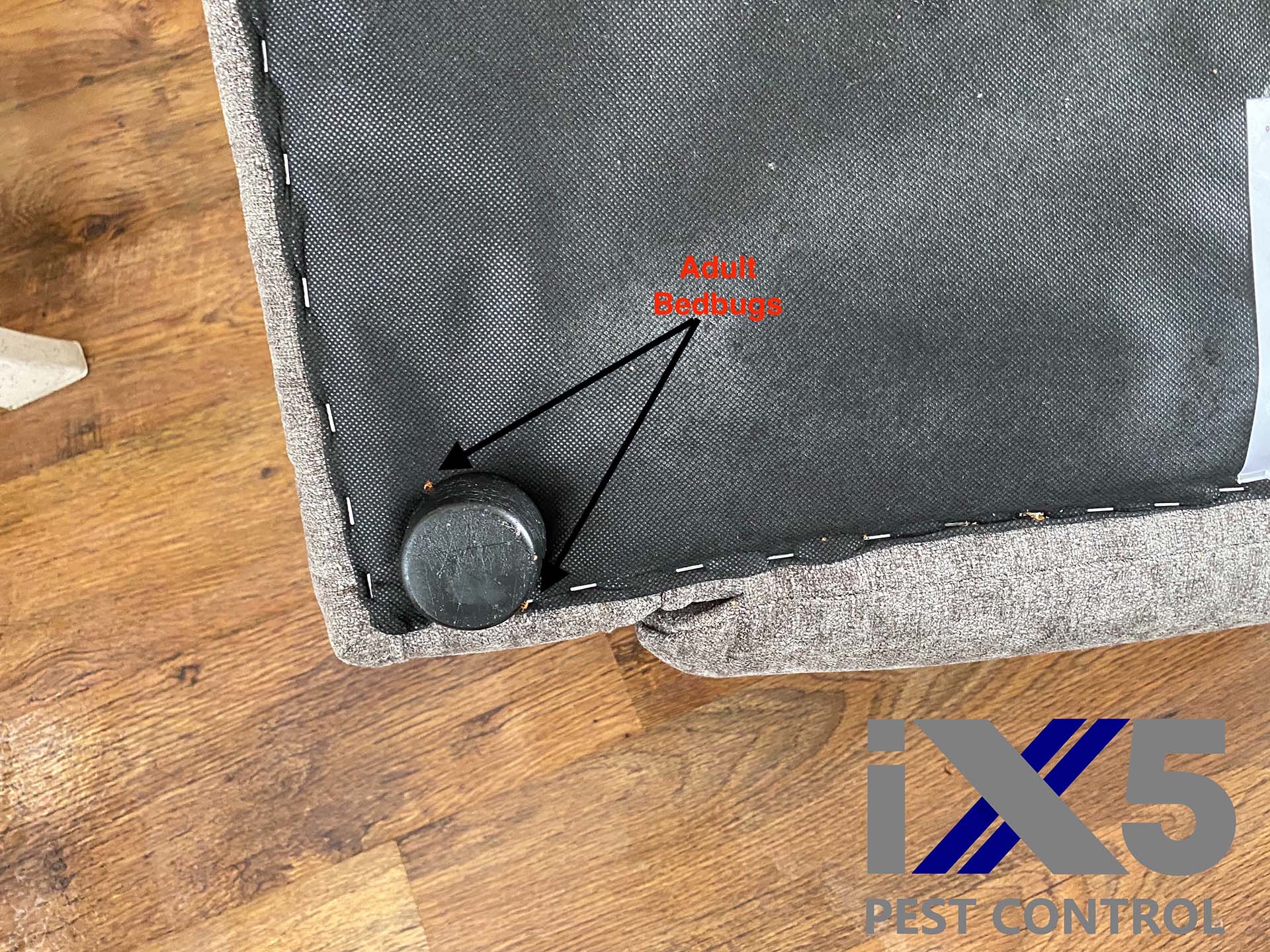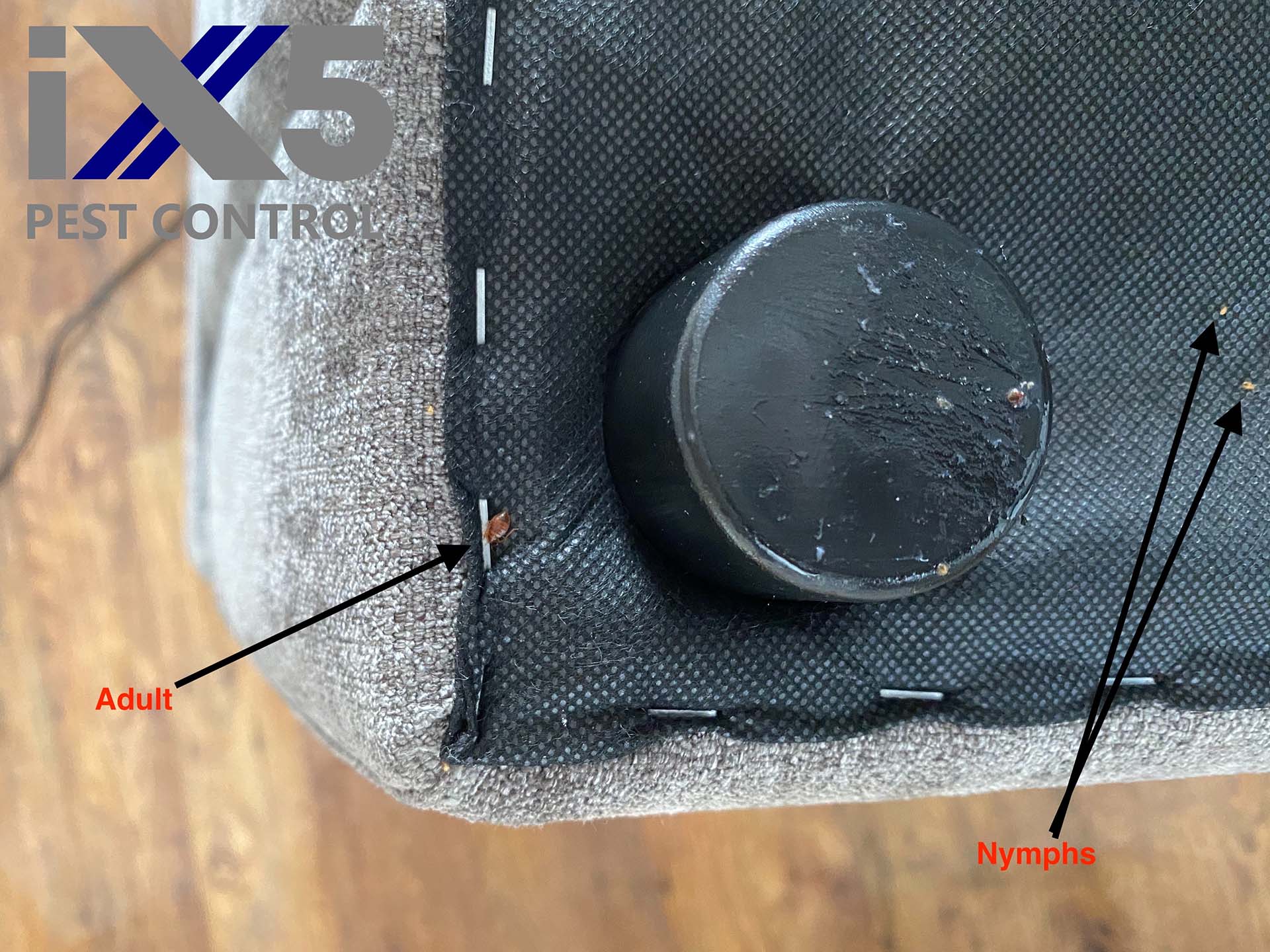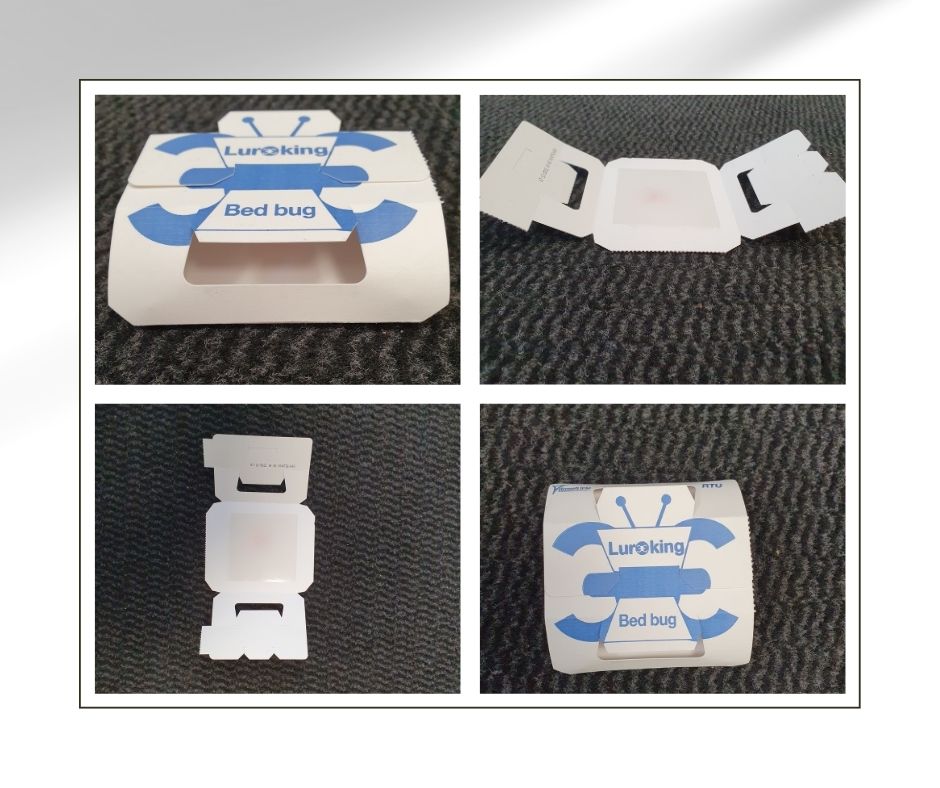Eradicating Bed Bugs in Care Homes
A medium-sized independent care home in Northamptonshire, equipped with around 20 beds, contacted us after discovering a bed bug infestation. The origin of the infestation remained a mystery, though it is suspected they might have been unintentionally introduced by a staff member, given bed bugs’ propensity to travel on fabrics such as coats, suitcases, and uniforms.
While the care home already had a contract with a multinational pest control company, they approached us for a competitive quote. Impressed with our approach and expertise, the owner entrusted us with the task. Over the course of several visits, our specialist, Matt O’Donnell, successfully tackled the challenging bed bug infestation.
The Treatment Process
To ensure a comprehensive eradication, iX5 Pest Control’s treatment strategy comprised of multiple stages:
- Steam Treatment:
- Method: This involved passing high-temperature steam over all bed frames, mattresses, and high risk furniture areas.
- Benefits: Steam provides an immediate effect, killing both adult bed bugs and their eggs upon direct contact.
- Limitations: While effective, steam doesn’t offer any prolonged residual effect. Hence, any bugs or eggs that dodge the steam can reignite the infestation.
- Residual Insecticide:
- Method: Matt systematically applied a suitable residual insecticide on mattresses, bed frames, floors, wall joints, and other potential bed bug habitats. This insecticide was carefully chosen for its effectiveness and safety profile.
- Benefits: This treatment continues to act for several weeks, killing any bugs that come into contact with it. Once dried, it is safe for human contact.
- Safety Measures: During the application, all necessary precautions were adhered to, ensuring no harm to the residents or staff. This particular insecticide, not available to the general public, is only available to professionals.
- ULV (Ultra Low Volume) Treatment:
- Method: ULV is an advanced technique involving filling a room with micro-droplets of insecticide, permeating even hard-to-reach nooks and crannies.
- Benefits: This method ensures complete room coverage. Once the treatment settles out of the air, typically within an hour, rooms can be safely reoccupied.
- Important Information: Keeping the rooms occupied is crucial post-treatment. Bed bugs, which can remain dormant for up to around nine months, are attracted by human presence. When they come out seeking their food source, they encounter the residual insecticide and are exterminated.
Monitoring for Reinfestation
The exact source of the infestation remained elusive, meaning the risk of reinfestation was a concern.
Continuous Monitoring and Assurance
Ensuring complete eradication of bed bugs isn’t simply about intensive treatment; ongoing vigilance is equally vital. To address this, iX5 Pest Control implemented a systematic monitoring process in the care home.
Bed Bug Monitors:
Setup: Strategically positioned in every room, these disposable, cardboard monitors are specifically designed to attract and trap bed bugs.
Mechanism: The monitors are equipped with a potent pheromone, mimicking the scents that allure bed bugs. As the pests venture out, attracted to these pheromones, they are ensnared by a glue base within the monitor.
Frequency of Checks: These monitors are meticulously inspected every six weeks. Not only does this frequency provide a continuous check on any resurgence of the pests, but it also offers insights into the efficacy of the treatment applied.
Additional Observations: Interestingly, while these traps are designed for bed bugs, we often find other insects attracted onto the traps. This incidental catch provides a broader overview of the insect activity within the care home.
Data Recording and Analysis:
Purpose: Continuous monitoring is as much about data gathering as it is about physical inspection. By maintaining detailed records of each inspection, we can identify patterns, notice potential problem areas and pre-emptively address them.
Review: Regularly reviewing this data ensures that our strategies remain effective and can be adjusted based on real-time insights.
Feedback with Care Home Staff:
Training: iX5 Pest Control provided basic training to the care home staff, enabling them to recognise the early signs of a resurgence. Their day-to-day proximity to potential infestation sites makes them invaluable allies in ongoing monitoring.
Regular Communication: Open channels of communication with the care home’s management and staff ensures that any concerns or observations are promptly addressed. This collaborative approach amplifies the efficiency of our monitoring efforts.
Through this comprehensive and ongoing monitoring, iX5 Pest Control aims not only to manage and eradicate current infestations but also to prevent potential future outbreaks, ensuring the comfort and safety of the care home’s residents.
Owing to our thorough and effective eradication methods and professional approach, the care home now awarded us their regular pest control contract.
Regulations, Responsibilities, and Addressing Stigma
Navigating the landscape of legal requirements is a crucial aspect of managing infestations in care homes. Beyond the legalities, understanding and addressing the social stigma attached to such infestations is equally essential.
Legal Framework:
Health & Safety and Public Health obligations: Residential care homes are required to put in place control measures to protect the health, safety and welfare of their employees, residents and visitors. Whilst they are not associated with the spread of disease, bed bugs are a public health nuisance. The presence of bedbugs can also have a negative impact on the mental health and wellbeing of all affected by their presence.
iX5 Pest Control’s Food Hygiene Regulations: Given that care homes serve food to residents, they are legally required to register as food businesses with the local authority. Food businesses are required to put in place adequate measures to prevent pest activity.
Role in Regulatory Compliance:
Documentation: iX5 Pest Control plays a pivotal role in assisting care homes to meet their legal responsibilities. We provide detailed records of each intervention, ensuring care homes have the necessary documentation to demonstrate compliance.
Proactive Approaches: Beyond reactive treatments, we also advise on preventative measures, assisting care homes in staying a step ahead of potential infestations and thus in line with their obligations.
Challenging Stigma:
Myth Versus Reality: A pervasive myth suggests that pest infestations, especially bed bugs, are indicative of poor hygiene or negligence. In reality, bed bugs are attracted to humans, their primary food source, and can invade even the most immaculately kept premises. Their presence is not a sign of dirt or neglect but of their adaptability. A common, widespread misconception is that bed bugs are a thing of the past. Quite the contrary, Bed bugs are still very common and the number of cases we are dealing with is currently increasing.
Educative Approach: At iX5 Pest Control, we believe in an educative approach, helping our clients understand the nature of the pests they’re dealing with. By dispelling misconceptions, we can collectively reduce the undue shame or embarrassment often associated with infestations.
Confidentiality and Sensitivity: Given the misconceptions, iX5 Pest Control maintains strict confidentiality. We approach every case with utmost sensitivity, ensuring the privacy of the care homes and all other customers we serve.
In addressing both regulations and stigma, iX5 Pest Control doesn’t just provide a service; we act as partners and educators, helping care homes navigate the complexities of pest control with knowledge, dignity, and assurance.

Identifying a Bed Bug Infestation: Key Signs and Prevention
Bed bug infestations can be particularly challenging to detect in their early stages, but quick identification is crucial for effective intervention. It’s vital for care homes, and indeed any establishment, to understand the signs and characteristics of these pests. Here’s how to recognise a potential bed bug problem:
- Physical Signs:
- Bites: The most immediate and often the first noticed sign of an infestation are the unexplained, often itchy, red welts that appear on the skin. These can sometimes appear in a line or cluster. While not everyone reacts to bed bug bites, those who do might find them very irritating.
- Excrement Stains: Bed bugs leave behind tiny black or brown excrement spots. These often look like small ink stains and are usually found around the areas where they hide or move.
- Small blood smears on bed linen or headboards
- Shed Skins: As bed bugs grow, they moult and shed their skin. Finding these translucent exoskeletons can be a clear sign of their presence.
- Bed Bug Appearance:
- Eggs: Bed bug eggs are minuscule, about 1-2mm in size, and are almost translucent with a pearly white hue. These are typically laid in hidden areas, making them somewhat challenging to spot.
- Adult Bed Bugs: An adult bed bug has a small, flat, oval body that’s brownish in colour. They become redder after feeding. Their size can be compared to that of an apple seed, approximately 4-6mm in length.
- Preferred Hiding Spots:
- Mattress Corners and Seams: One of the most common places to find bed bugs is in the corners and seams of mattresses, or around headboards. They prefer tight spaces where they can hide close to their human hosts.
- Furniture: Beyond the bed, these pests can be found on bedside tables, in the folds of curtains, under loose wallpaper, within the gaps of upholstered furniture, and even inside electrical sockets.
- Luggage and Clothing: Being excellent hitchhikers, they often move from place to place by latching onto luggage, clothing, or other personal items.
- Prevention and Vigilance:
- Regular Checks: Implement routine checks of mattresses, bed frames, and other potential hiding spots, especially after travels or the introduction of second-hand furniture.
- Awareness: Training staff in care homes to recognise these signs can significantly expedite the identification process. A knowledgeable team can be a first line of defence against a burgeoning infestation.
- Pheromone Traps: Utilising pheromone traps can act as an early detection system. While they won’t eliminate an infestation, they can provide an indication of the presence of bed bugs.
By understanding the behaviours and signs of bed bugs, care homes and other establishments can act swiftly, minimising the extent of an infestation and its impact on residents and guests. In such situations, professional intervention, like the services provided by iX5 Pest Control, is crucial to ensure complete eradication.
Need Help Resolving a Bed Bug Infestation?
If you do have concerns regarding bed bugs get in touch with iX5 Pest Control. We will conduct a thorough survey and detail our recommended solutions, including advising on preventative measures. We use a range of control strategies depending on various factors such as the location, the extent of activity, and any sensitive receptors or non-target species. We offer bed bug pest control for domestic premises and businesses in Northampton, Daventry, Rugby, Market Harborough, Towcester, Brackley, Wellingborough, Kettering, Corby, Olney and all of the surrounding areas. Our team of specialists are available both evenings and weekends at no extra cost. Should you require assistance call us on 01604 328545 , email [email protected] or use our simple contact form.



